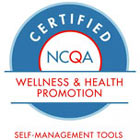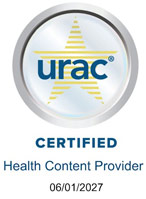Does this test have other names?
CBC
What is this test?
The complete blood count (CBC) is a blood test used to screen your overall health and to look for many different illnesses, including anemia, infections, and leukemia. The test finds a large amount of information from the blood sample you've given, including:
-
The number of white blood cells (WBCs). There are five types of WBCs. All play a role in fighting infection. High numbers of WBCs may mean you have an infection or inflammation somewhere in your body. Low numbers of WBCs may mean you are at risk for infections.
-
The number of red blood cells (RBCs). RBCs carry oxygen throughout the body and remove excess carbon dioxide. Too few RBCs may be a sign of anemia or other diseases. In rare cases, too many RBCs may cause problems with blood flow.
-
How the size of your red blood cells varies. This test is known as red cell distribution width (RDW, RDW-CV, or RDW-SD). For instance, you'll probably have greater differences in red blood cell size if you have anemia.
-
Hematocrit (HCT). This means the portion of red blood cells in a certain amount of whole blood. A low hematocrit may be a sign of too much bleeding. Or it might mean that you have iron deficiency or other disorders. A higher-than-normal hematocrit can be caused by dehydration or other disorders.
-
Hemoglobin (Hgb, Hb). Hemoglobin is a protein in red blood cells. It carries oxygen from the lungs to the rest of the body. Abnormalities can be a sign of problems ranging from anemia to lung disease.
-
The average size of your red blood cells. This test is known as mean corpuscular volume (MCV). MCV goes up when your red blood cells are bigger than normal. This happens if you have anemia caused by low vitamin B12 or folate levels. If your red blood cells are smaller, this can mean other types of anemia, such as iron deficiency anemia.
-
A platelet (PLT) count. Platelets are cell fragments that play a role in blood clotting. Too few platelets may mean you have a higher risk of bleeding. Too many may mean a number of possible conditions.
Why do I need this test?
You may need this test if you have:
-
Unusual bleeding or bruising.
-
Infection or inflammation.
-
Weakness and tiredness that doesn’t go away. These may be symptoms of anemia.
You may also have this test if your health care provider thinks you may have a certain disease or condition. Or you may have this test as part of a routine exam to check your health. The test may also be used to see how well certain treatments are working.
What other tests might I have along with this test?
Your health care provider may order other tests if your CBC results are abnormal. These may include other blood tests, urine tests, and bone marrow or spinal fluid tests.
What do my test results mean?
Test results may vary depending on your age, your gender, your health history, the method used for the test, and other things. Your test results may not mean you have a problem. Ask your health care provider what your test results mean for you.
Although estimates vary from lab to lab, here are some typical normal ranges for the main parts of the CBC:
-
Red blood cell (RBC) count: 3.93 to 5.69 million cells per cubic millimeter (million/mm3)
-
Hemoglobin (Hgb, Hb): 12.6 to 17.5 grams per deciliter (g/dL) for males; 12.0 to 16 g/dL for females
-
Hematocrit (HCT): 38% to 47.7%
-
White blood cell (WBC) count: 3,300 to 8,700 cells per cubic millimeter (thousand/mm3)
-
Platelet (PLT) count: 150,000 to 450,000 per cubic millimeter (thousand/mm3)
Abnormal test results can have many causes. Some of these causes might not be something that needs to be treated. The most common problem found through the CBC is mild anemia. You may have more testing, depending on how bad the anemia is and whether other problems crop up in the test.
How is this test done?
The test is done with a blood sample. A needle is used to draw blood from a vein in your arm or hand.
Does this test pose any risks?
Taking a blood sample with a needle carries risks that include bleeding, infection, bruising, and feeling dizzy. When the needle pricks your arm, you may feel a slight sting or pain. Later, the site may be slightly sore.
What might affect my test results?
Certain medicines might affect your results. Talk with your health care provider about the medicines you are taking.
How do I get ready for this test?
You don't need to prepare for this test. Be sure your health care provider knows about all medicines, herbs, vitamins, and supplements you are taking. This includes medicines that don't need a prescription and any illegal drugs you may use.
Author: Fisher, Steve
© 2000-2025 The StayWell Company, LLC. All rights reserved. This information is not intended as a substitute for professional medical care. Always follow your healthcare professional's instructions.
